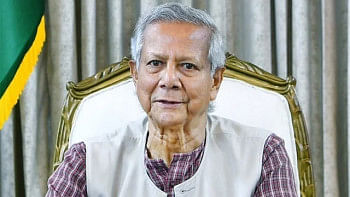Risks and responses to Rohingya relocation plan

It is now clear that the Bangladesh government is all set to relocate nearly 100,000 Rohingya refugees to Bhasan Char, a remote island off its coast, starting April 2019. All preparations and logistics are nearly ready. Available reports indicate that the United Nations is finally helping to facilitate the relocation plan. However, the UNHCR international protection chief called for "voluntary" relocation of refugees to this new remote home on the Bhasan Char. The move is opposed reportedly by many refugees because they fled Myanmar to save their life; and don't want to risk it now by living on the char in the middle of the Bay of Bengal.
My own view published in The Daily Star over a year ago (January 7, 2018) was that refugee relocation to Bhasan Char would be a great mistake. The relocation of 100,000 refugees, only one-tenth of the refugee population in Cox's Bazar, is not going to ease congestion or overcrowding in the camps as claimed by the government nor reduce and/or minimise the growing conflict with the host population. Even if dispersal and resettlement was required to lessen the pressure on the squalid settlements in the camps, why relocate such a huge number of refugee population to an inaccessible and physically hostile environment on a remote island in the Bay of Bengal? There is perhaps no clear answer or response to this as yet.
We all know that the Bhasan Char was not readily available for refugee resettlement. The Bangladesh government spent its own USD 280 million to transform this 20-year-old uninhabited island char to a secured and planned settlement with flood defence embankments, roads, housing quarters, water supply, solar panels, power, emergency shelters, helipad and other infrastructural amenities. The Bangladesh Navy supervised a team of British and Chinese engineers who worked for over two years to complete the site. The site consists of 120 blocks. Each block with 12 buildings for a total of 1,440 buildings to house 100,000 refugees. The available covered space for each refugee is about 3.6 metres, barely meeting the UN emergency standard of 3.5m per person. The infrastructure developed in the Bhasan Char is huge and surely very expensive for refugee relocation on a temporary basis unless the Bangladesh Navy has other intended use for the facility in future.
In Cox's Bazar, mobilisation is underway for compiling a list of the first refugees to be moved on the basis of voluntary relocation. The bulk of the families for relocation have been targeted from Camp 15, which is the second largest camp in Ukhiya, only after Kutapalong. Over the past couple of months, officials in charge of various camps known as Camp-in-Charge (CIC) have shown videos of Bhasan Char to the refugees and explained the various facilities built there for their families. After each video was shown, the Majhis (camp leaders) typically showed a positive attitude to the new site in the presence of the CICs. However, in private, they seem to have no interest in moving to the distant and isolated char in the Bay of Bengal.
The overwhelming preference is to remain in Ukhiya, which is a safe haven for the refugees, and is not too far from the Myanmar border. The proximity to Myanmar keeps them socially and culturally alive as Rohingya people. They also get familial information from Rakhine almost on a daily basis through informal channels. Furthermore, many families depend on remittances from their relatives and family members working in the Gulf and Middle East. So, the refugees have no interest in moving to Bhasan Char without any telecommunication connections or any easy and dependable transportation with the mainland. Many fear the isolation and lack of freedom there. "Don't send me to the island," a poem written by a Rohingya refugee went viral on social media. It read: "I am a human being, I deserve all human rights."
Bhasan Char is typically a three to four hour-long trip by boat from the mainland. The World Food Program (WFP) has already raised concerns, based on their initial assessments, on the viability of safely relocating the refugees to the island within the context of food security and other emergency considerations. There are no clear-cut answers yet on their future employment and livelihood on the island except for fishing and farming, as one official mentioned. The island has an estimated 13,000 acres of land; of this, a 1,500-acre area is circled by a 9-foot (or three-metre) flood embankment, short of 21-foot barrier recommended by WFP. The remainder of the land is not available for year-round cultivation and subject to flooding.
Bhasan Char is located in an area vulnerable to periodic violent cyclones. There are recorded data for cyclone disasters in the area going back to the 1960s. The cyclone of 1970 was the deadliest, killing 500,000 people. The 1991 cyclone was responsible for the death of an estimated 200,000 people (some accounts estimate the figure to be as high as 300,000). The 1991 cyclone was associated with tidal surges up to six-metre high in the offshore islands. The 1991 cyclone also destroyed 197 km of coastal embankments. Several thousand people from the coastal belts died during cyclone Sidr in 2003 and Aila in 2009. So there is reasonable fear, risk and uncertainty. Yanghee Lee, the UN Special rapporteur on human rights in Myanmar, is unsure whether the island is "truly habitable".
As a host country, Bangladesh is struggling with the influx and the overcrowded camps. However, overcrowding is a common experience in refugee camps globally. The focus should be more on the safety and security of refugees, with the ultimate objective being the repatriation of refugees to their homeland. The dispersal and relocation to Bhasan Char or other alternative settlements in the future may give the wrong signal to Myanmar that Bangladesh is perhaps slowly absorbing the refugee population. Thus, the relocation to Bhasan Char may potentially complicate refugee repatriation and resettlement. Bangladesh should work with the international community, more particularly the superpowers, to resolve the current standoff and force Myanmar for speedy repatriation with the full rights and citizenship of the Rohingyas restored.
Mohammad Zaman is an international development/resettlement specialist and advisory professor at the National Research Centre for Resettlement (NRCR), Hohai University, Nanjing, China. Email: [email protected]

 For all latest news, follow The Daily Star's Google News channel.
For all latest news, follow The Daily Star's Google News channel. 



Comments